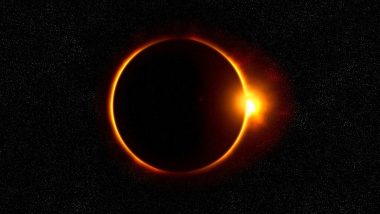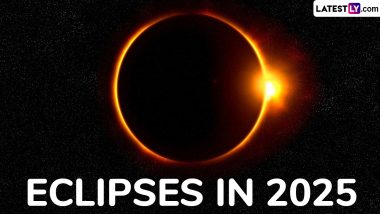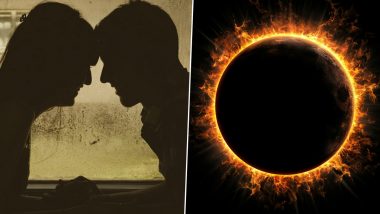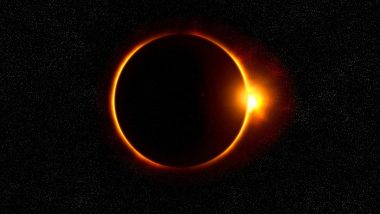The end of the year brings us a lot of celestial events to rejoice. With the holiday season approaching us, sky gazers will be blessed with various events this month. A full moon, meteor shower, solar eclipse, winter solstice and Great Conjunction of Jupiter and Saturn—we have so many celestial occurrences to grace the sky. A total solar eclipse is slated to occur on December 14. This is the second and this year’s last solar eclipse, also known as Surya Grahan in India. There a lot of traditions and myths attached to the celestial event, when surya grahan occurs in the country. However, the total solar eclipse 2020 of December 14 will not be visible in India. But you can still watch the celestial event that will be live-streamed online. In this article, we bring you everything you should know about the last solar eclipse of the year.
What is a Total Solar Eclipse?
There are three kinds of solar eclipses—total, partial and annular. The solar eclipse which occurred on June 21, 2020, was an annular solar eclipse. December 14 solar eclipse will be a total solar eclipse. It occurs when the New Moon comes between the Sun and Earth and casts the darkest part of its shadow, the umbra, on Earth. During a total eclipse of the Sun, the Moon covers the entire disk of the Sun. In partial and annular solar eclipses, the Moon blocks only a part of the Sun.
Total Solar Eclipse Date and Time
The total solar eclipse 2020 is on December 14. According to timeanddate.com, the partial eclipse will begin at 19:04 IST, and the full eclipse will start at 20:02 IST. The solar eclipse will peak at 21:43 IST and end at 00:23 IST on December 15, 2020.
Total Solar Eclipse in India
The total solar eclipse will not be visible in India. The celestial event will be visible for people in certain regions in the southern hemisphere, South America, especially in Chile and some parts of Argentina. A partial solar eclipse will be visible in Brazil, Paraguay, Uruguay, Pery and Ecuador, as well as in parts of Antarctica and south-westerly parts of Africa. Jupiter and Saturn to Reunite After 800 Years to Form Rare ’Christmas Star’ On December 21; Know All About The Once-in-a-Lifetime Celestial Event.
How and Where to Watch Total Solar Eclipse?
The total solar eclipse will not be visible for most countries. Again, coronavirus restrictions may also be an obstacle for skygazers to watch the celestial occurrence outside. Thankfully, many websites and official YouTube channels will be live streaming the event. Yes, you read that right. The eclipse will be live-streamed online on YouTube by the like of Exploratorium in San Francisco, Time and Date and Slooh.
Watch Total Solar Eclipse Live Streaming
A maximum of five solar eclipses can occur in a year. But in most years, we witness only two. December 14 solar eclipse will be the last one for this year. And on December 30, there will be a full moon, also called the cold Moon—the last full Moon for 2020.
(The above story first appeared on LatestLY on Dec 10, 2020 01:59 PM IST. For more news and updates on politics, world, sports, entertainment and lifestyle, log on to our website latestly.com).













 Quickly
Quickly





















